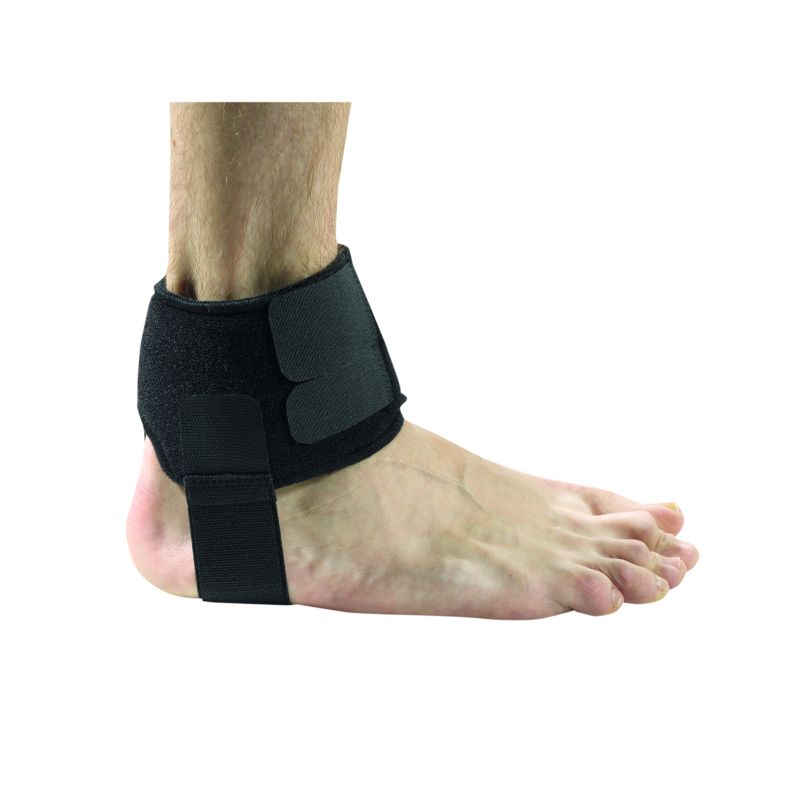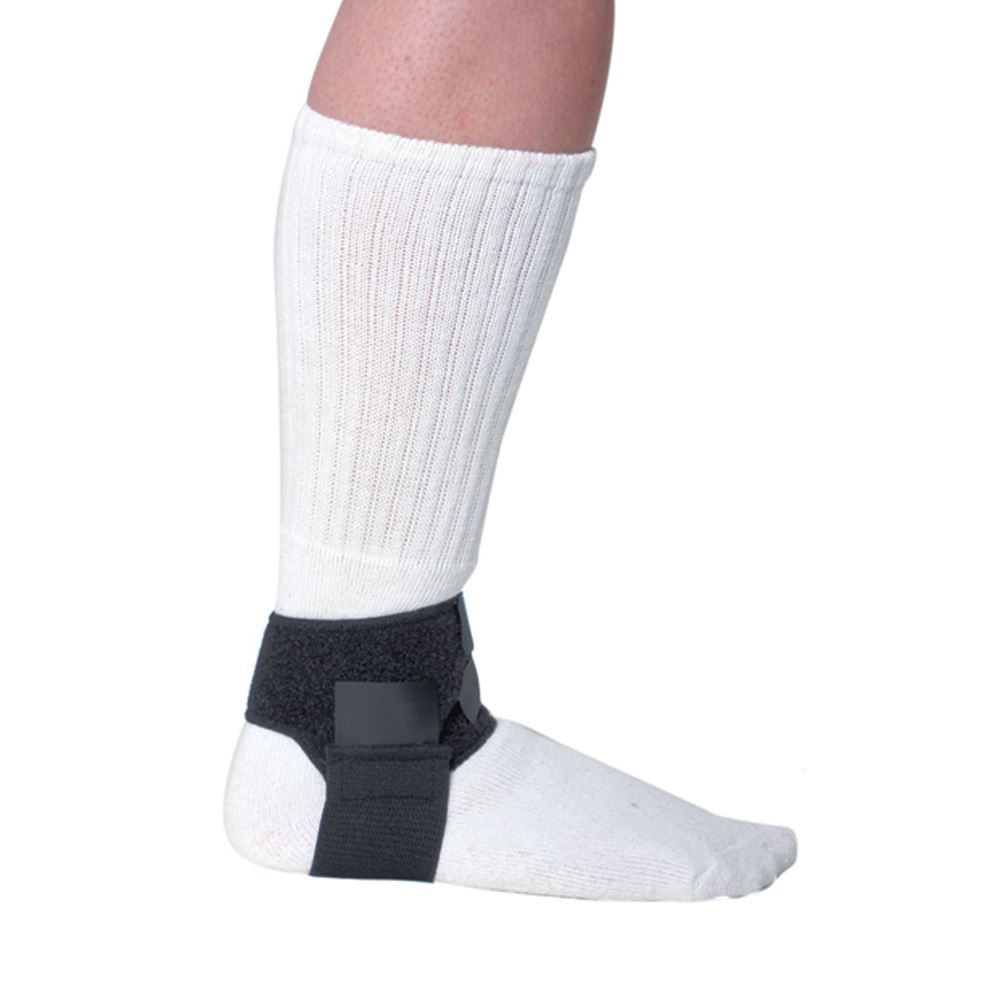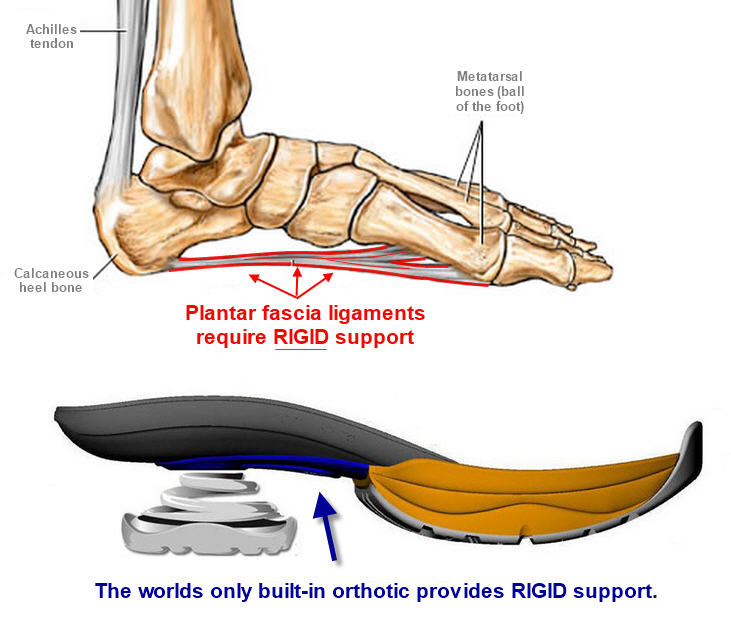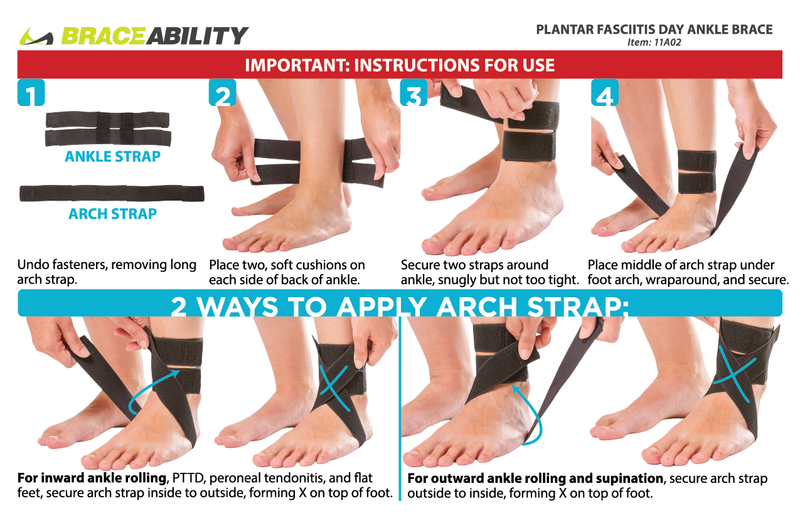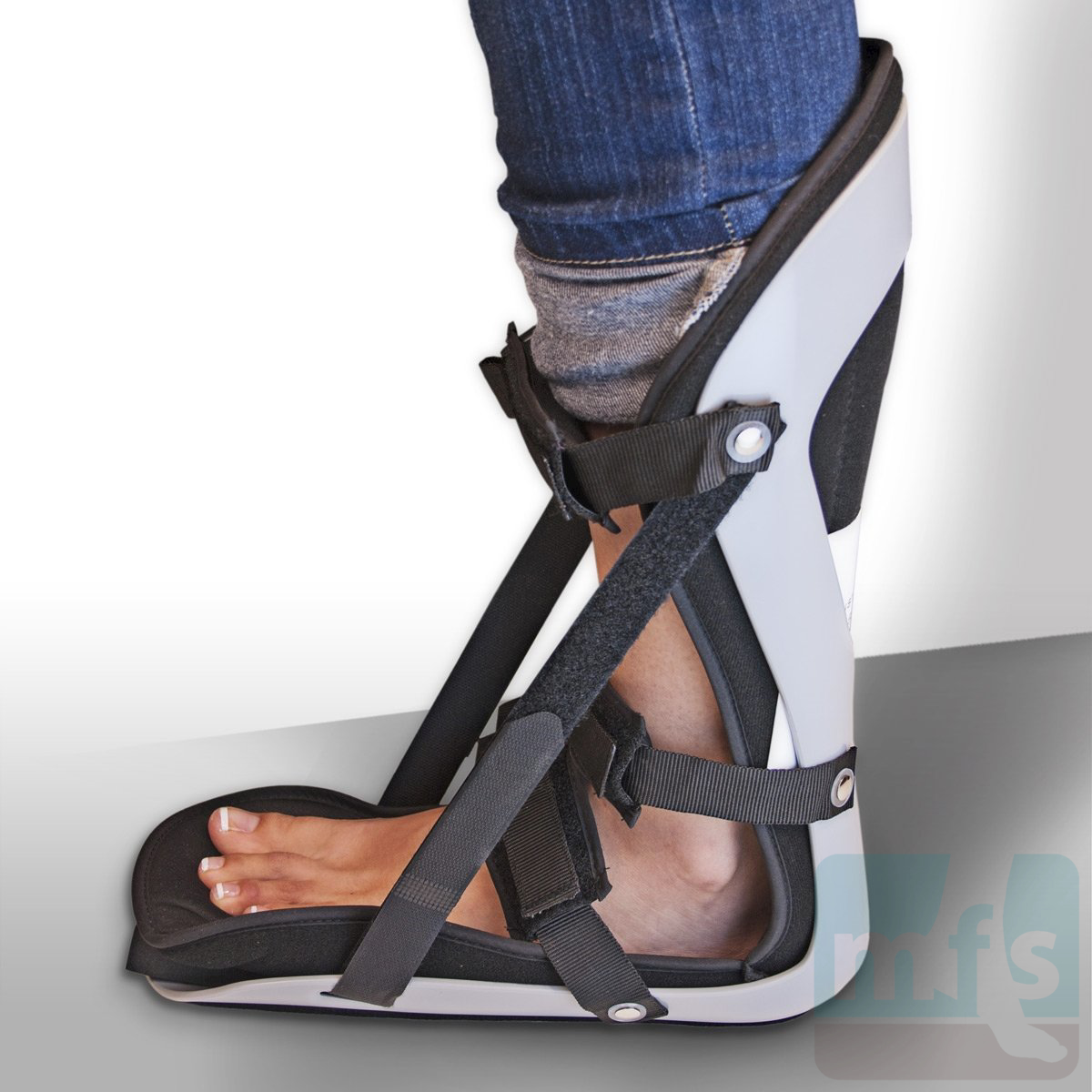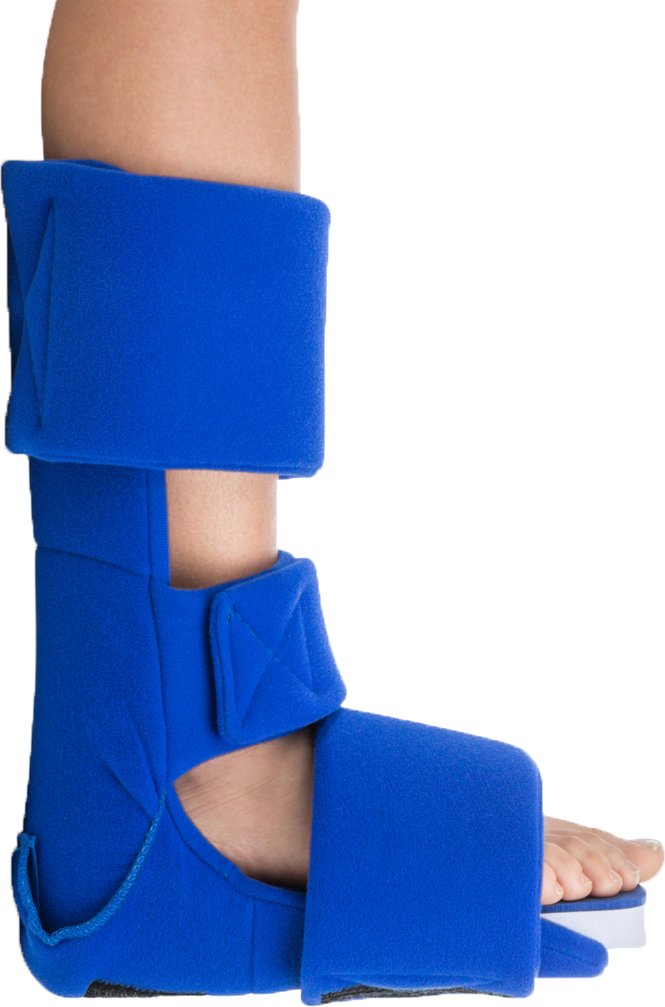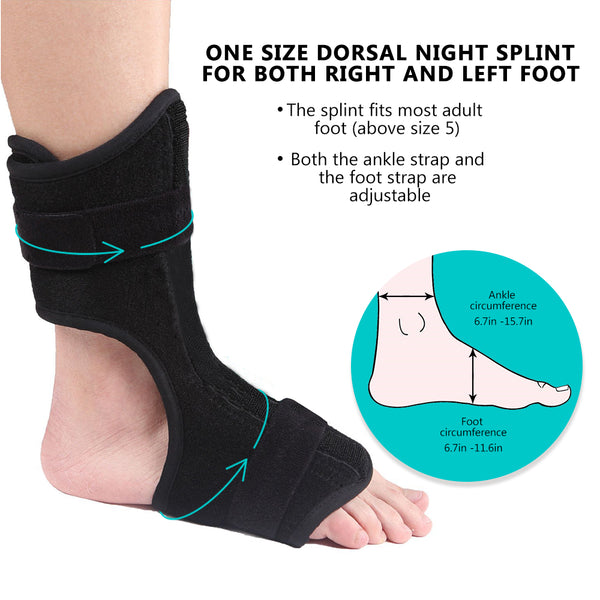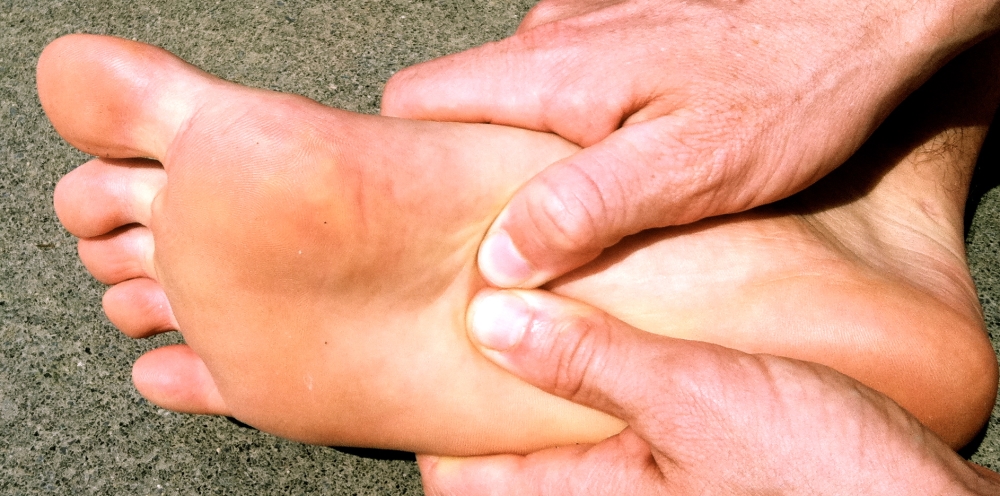Further, clinical guidance to employ one stretching over the other is unclear or not well defined. In a randomized controlled trial, DiGiovanni et al13 compared the efficacy of plantar fascia stretching versus Achilles tendon stretching in a sample of 101 subjects with symptom duration greater than 10 months. In addition to the assigned stretches, all subjects received over the counter prefabricated insoles, three weeks of celecoxib, and a patient educational video. Plantar fascia stretches were performed while sitting and the Achilles tendon while standing by one group, three times a day, for 10 repetitions with a hold of 10 seconds per repetition. The plantar fascia stretching group also had a higher percentage of positive responses to an outcomes survey in terms of pain, activity and satisfaction.
After eight weeks, patients from both groups were instructed to continue with plantar fascia stretching. At two-year follow up,5 both groups continued to show improvement on the pain subscales of the FFI compared to baseline. These two studies suggest that plantar fascia stretches provide better symptom relief for chronic plantar fasciitis. Our Premium Plantar Fasciitis Brace is designed for those individuals suffering with daytime pain and discomfort associated with Plantar Fasciitis. The Plantar Fasciitis wrap can be used in conjunction in a night splint to help provide both nighttime and daytime relief for Plantar Fasciitis pain and discomfort. According to the Mayo Clinic, heel pain is most commonly caused by inflammation of the plantar fascia--the tissue along the bottom of your foot that connects your heel bone to your toes.
For effective treatment while walking or sitting, try this Plantar Fasciitis Daytime Strap Brace. Fitting comfortably in your shoe, the plantar fasciitis splint features support straps that lift the arch and provide compression to the plantar facia for immediate relief. The compact size our our PF Wrap allows the patient to wear this brace comfortably throughout the day for symptomatic relief. Combine with a Night Splint for around the clock relief for Plantar Fasciitis discomfort. The Accommodator plantar fasciitis insole supports the arch so it cannot collapse or "flatten" during normal daytime standing, walking or running.
When the arch collapses, the faciae, which tie the forefoot to the heel, are stretched, aggravating the plantar fasciitis pain. The FREEDOM Plantar Fasciitis Night Splint helps reduce severe heel pain by stretching the plantar fascia, foot and calf muscles that relax while sleeping, so patients are able to get out of bed with less pain. AliMed carries a full-line of plantar fasciitis night splints. The combination of a night splint and these insoles not only reduces pain, but also helps resolve the plantar fasciitis. Some designs available also pull the toes backwards as well as keeping the ankle in a neutral position. This provides added benefit by stretching the plantar fascia as well as the calve muscles.
A night splint is designed to be worn whilst you sleep at night. If you're lucky enough to get a magic 8 hours sleep, this means the night splint is doing all the hard work over a long period of time whilst you enjoy your well deserved rest. When it's time to get out of bed in the morning, you simply take off the splint, put your foot down to the ground, and feel sheer relief that you don't feel as if you've just stood on 50 pieces of Lego.
Well this is all well and good in theory, but do night splints actually help plantar fasciitis morning pain? A go-to method for treating heel pain is a plantar fasciitis night splint. These splints hold the foot in a position that gently stretches the plantar fascia and the calf muscles while you sleep. This plantar fasciitis brace is lightweight and cool, which makes it the user more comfortable wearing it for extended periods of time, thereby speeding the healing process while easing pain.
For patients who have had difficulties with the use of night splints, a day-wear SAS brace could be another possible option. In addition to the phase of healing, patient's work environment, lifestyle, and the costs associated with treatment should be considered when prescribing a treatment regimen. The patient's compliance with the suggested treatment method should also be monitored and alternative options should be provided.
If you suffer from plantar fasciitis pain first thing in the morning, your doctor may recommend that you wear a special splint or ankle brace while you sleep. The purpose of this type of plantar fasciitis product is to keep the foot extended throughout the night, to reduce stress on the plantar fascia. This can lead to greater comfort both while you sleep and in the morning. Like insoles, plantar fasciitis night braces and splints are sized. The sizing may run according to shoe size or the physical measurements of the feet.
You can read the product descriptions of specific products for more information about sizing. The Strassburg Plantar Fasciitis night sock was the first sock proven medically effective for the treatment of plantar fasciitis. The average recovery time in a large, independant research study was 18.5 days with 97.8% of patients recovering within 8 weeks.
The Strassburg sock gently holds the toes in place, allowing the foot to flex naturally. This places tension on the plantar fascia without uncomfortably squeezing or stretching the toes and placing unnecessary tension on the calf. The adjustable toe strap allows the user to increase tension to assist with other injuries where a consistent, controlled stretch may be helpful. A plantar fasciitis night splint helps combine these two effective conservative treatment methods–keeping your foot or feet gently flexed in a stretch while you sleep. Plantar fasciitiscan be a chronic problem that may require long-term solutions.
Ideal long-term solutions include special prescriptionorthotics, ideal shoes, avoiding going barefoot at home, and a night splint. One reason is that without the weightbearing pressure of being on your feet during the day, the plantar fascia becomes more inflamed and more fluid accumulates in this area-swelling or edema . Fluid will also accumulate because the foot is in a relaxed position and there is minimal tension on the fascia allowing for more "engorgement". So upon arising, you get up and walk on this inflamed fluid-filled plantar fascia at the heel level.
Until some extra fluid is literally "worked out", there is severe pain and often limping. Most people find posterior night splints very bulky, uncomfortable and difficult to wear whilst sleeping. Posterior night splints have been shown to be less effective than anterior night splints and I do not recommend them.
Anterior night splints are less bulky and more comfortable than posterior night splints. A limitation of the anterior night splint, however, is that it does not pull the toes back, it only keeps the ankle joint in a neutral position. It has been clinically proven that dorsiflexion of the toes in combination with dorsiflexion of the ankle provides a maximum stretch on the plantar fascia and Achilles tendon (Carlson et al 2000; Flanigan 2007). The most recent night splint design, the sock design is not made from plastic and is the most comfortable of the three designs for most people. The sock design night splint provides dorsiflexion of the toes in a combination of dorsiflexion of the ankle, providing the most effective stretch whilst sleeping.
Due to improved clinical effectiveness and improved comfort the sock design night splint is considered the best option. In my opinion, the night splint is an incredibly effective device at eliminating heel pain first thing in the morning which is what almost every patient with plantar fasciitis suffers with. I have prescribed many of my patients with night splints and achieved very successful results over the years. It is one of the most readily available, cheap, and effective treatment options for plantar fasciitis as it reduces pain when the patient gets out of bed in the morning.
This breaks the pain cycle and promotes faster recovery time from plantar fasciitis. In addition to this, there is moderate quality research evidence to support the use of night splints in the management of plantar fasciitis. While night splints are just one of many treatment options for foot conditions like plantar fasciitis and heel spurs, they are one of the best ways to make the most of your healing time with a day/night approach! First let's discuss the history of the night splint and how the night splint works to treat the pain associated with plantar fasciitis.
Back in the "days of yore" heel pain or plantar fasciitis was frequently treated with immobilization in a walking cast. This facilitated placing the plantar fascia at rest on a 24/7 basis. The cast also served to re-distribute pressure away from the heel to other structures in the foot, ankle and calf. My first hand research has indicated that the first consistent use of the night splint concept was started at Thomas Jefferson University Medical Center somewhere around 1989 to 1990.
The oral history is that Dr. Keith Wapner, yes related to that Judge Wapner, offered a cast to treat the plantar fasciitis of one of his orthopaedic residents. The resident balked at having to wear a cast thereby leading Dr. Wapner to offer the resident the use of a molded plaster splint that he would wear at night. The morning pain and other pain associated with the resident's plantar fasciitis went adios.
However, ultimately Dr. Wapner found that patients did not much like to wear a heavy plaster splint to bed. Sometimes the splint would crack, scratch the other leg or was just too heavy and bulky. This spawned the development of numerous prefabricated splint designs to make a more durable and hopefully more comfortable splint. We will talk about the different types of splint at another time. The Alphabrace is a low profile night splint that uses 3 velcro straps to position the foot into a dorsiflexed position to maximize a stretch to the calf and plantar fascia.
Similar to other braces, the top reviews on this brace reported decreased morning heel pain after a few nights of wearing the brace. Others commented on the affordability of the brace as this currently can be purchased for less than $20. Upon conclusion of the study, it was determined that a tension night splint, in conjunction with Ibuprofen, stretching and heel cushions, proved effective in treating plantar fasciitis.
High-quality sock night splints are soft, cozy, and stay cool while you sleep. Manual passive stretching/active stretching of the Achilles tendon and plantar fascia are the mainstay treatment for plantar fasciitis. Greve et al28 also assessed the effectiveness of combined treatments, including stretching exercises and ultrasound or radial shockwave therapy.
In another study, Hyland et al1 reported a decrease in pain with plantar fascia stretching and calcaneal taping. Another brace option, the night splint, has long been used to treat plantar fasciitis. Several studies38-40 have investigated the effectiveness of the posterior dorsiflexion splint/night splint for the treatment of plantar fasciitis; however most of these studies have yielded mixed reviews. The purpose of the splints is to keep the ankle in neutral position mostly during the night.
Although the splints are frequently used for treatment of plantar fasciitis, most of the studies had high dropout rates and low compliance, possibly due to discomfort caused by the splint. Further, the literature is lacking evidence of superior benefits of the night splint compared to other conventional treatment measures. For this patient, she has chronic heel pain, so we're going to dispense a night splint for her.
Interesting things about night splints, is what they're supposed to do is just put a gentle stretch on the ligament that's causing the heel pain, the plantar fasciitis. By itself, in studies it works about 65% of the time without doing anything else, so it's a pretty effective treatment for heel pain and we use it quite frequently. One problem with a posterior night splint is that the heel tends to lift up and the foot is not held in ideal position. However, just by having the foot at 90° there is some benefit. But again another problem is individuals with a high arch foot are prone to nerve irritation overnight and your feet may seem to go numb.
Potentially this could be a problem and usually causes enough irritation that goes individuals with high arch feet or nerve irritation will have to discontinue the use of the night splints. There are many different types of night splints because patient's have different preferences and foot types. One reason why there are so many types of night splints, is that they are an effective adjunct to long-term treatment for plantar fasciitis. Plantar fasciitis is a very common problem that affects a part of the foot known as the plantar fascia. This band of tissue runs along the bottom of your foot from the bottoms of your toes to your heel. Its purpose is to strengthen and support the arch of your foot.
When this tissue becomes injured or strained, it develops inflammation, which leads to the pain associated with plantar fasciitis. Before using any type of product to address plantar fasciitis symptoms, it is important to talk to your doctor or health care provider about your concerns. He or she can confirm that you're suffering from plantar fasciitis and recommend the best methods of dealing with your discomfort. In a prospective randomized controlled trial, Porter et al29 randomized 94 subjects to either sustained stretching or intermittent stretching of the Achilles tendon.
The sustained stretching group was instructed to stretch for three minutes, three times a day; the intermittent group was instructed to perform five 20-second stretches twice a day. Increased dorsiflexion range of motion correlated with decreased pain and increased function for both groups. There was no long term follow up and a high dropout rate (29.8%) was observed.
However there is no consensus on what is the best treatment option for plantar fasciitis. Night splints may be used to treat conditions such as Achilles tendinopathy and plantar fasciitis. This position applies a constant, gentle stretch to the plantar fascia.
It also stretches the Achilles tendon at the back of the heel, preventing it from contracting. You can wear night splints every night for up to several months. Then you can gradually reduce how often you use them as your symptoms go away. There is limited and inconsistent evidence for the use of tension night splints previously published, particularly in a population with chronic plantar fasciitis.
This structured single-blinded study shows some benefits in pain and local function, albeit not in flexibility, in both of the groups studied, with a possibility of earlier benefit seen in the intervention group. The very limited differences in outcome seen between the groups questions the clinical effectiveness in outcomes in this population of the use of a tension night splint. The Vive night brace is your typical plantar fasciitis boot, designed to reduce pain and inflammation first thing in the morning. It comes with a couple foot wedges for better positioning and a foot massaging ball as additional bonuses.
This night splint is designed with 3 velcro straps and a soft padding that covers the entire shell, perhaps making it the most comfortable splint on the market. For individuals with very severe or chronic plantar fasciitis, a traditional night splint, with fully adjustable stretch, may be preferable if the sock night splint isn't quite enough stretch to reduce morning pain. Plantar fasciitis is a condition that involves the inflammation of the plantar fascia . This condition is caused when the ligament that supports the arch of the foot is strained. For treatment, a plantar fasciitis ankle splint or a night ankle splint is used. The brace or splint will help hold the foot with the toes pointed up and with the foot and ankle at a ninety-degree angle.

